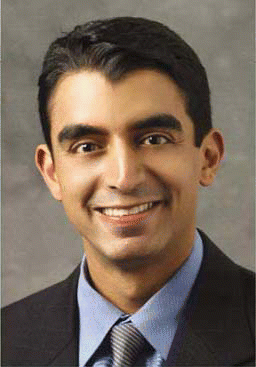We teach a course at the American Society of Aesthetic Plastic Surgery on faster healing techniques, he said. For someone to be happy with their plastic surgery, it has to heal quickly, be relatively painless, and it has to look natural. In California, we use as our criteria that they have to be able to take a shower and wash their hair, drive their car, and go back to the gym.
Explore This Issue
May 2006To achieve this, Dr. Ellenbogen and his colleagues use a minimal number of passes. In addition, he uses general rather than local anesthesia because locals break down the fat, and anti-inflammatory steroids to prevent swelling and increase the take of fat.
Fat Grafting Basics
An outpatient procedure, fat grafting involves careful harvesting, sterile transfer and purification, and gentle placement next to a blood supply.
Following sterile preparation of the harvest site (usually the abdomen or thighs), a local anesthesia is administered for a small stab incision. The harvesting device used by Dr. Coleman is a 10 mL disposable Luer-lock syringe attached to a two-holed blunt cannula. Suction is hand-applied-not mechanically vacuumed-by slowly withdrawing the plunger.
Next, the fatty tissue is carefully transferred and purified. The cannula is disconnected from the Luer-lock and capped. The plunger of the syringe is removed and the capped 10 mL syringe is placed in a sterilized sleeve in a sterilized central rotor of a centrifuge, and spun at about 3000 rpm for two to three minutes.
The fatty tissue separates into three layers: the top composed primarily of oil, the bottom almost entirely of blood and lidocaine or Ringer’s lactate, and the middle layer primarily of usable subcutaneous tissue. While some physicians wash, whisk, or strain the fatty tissue, Dr. Coleman said these techniques will damage the fat.
You can’t just cut away ‘extra’ skin; you have to re-inflate it to replace the lost volume. Fat’s role is to plump up areas that have hollowed over time. – -Laxmeesh Mike Nayak, MD
Fat placement should occur at the time of harvest to a well-vascularized bed to maximize graft take. Every part of the graft should be within 1.5 mm of living, vascularized tissue, wrote northern Virginia plastic surgeon Wendy Gottlieb, MD, in an eMedicine article titled Facial Fat Grafting (www.emedicine.com/plastic/topic59.htm ). She recommends small tracks for the grafts and says to insert the cannula either over a bevel-tipped needle or through a 1- to 2-mm stab incision, injecting fat in a gently controlled method.

Leave a Reply